Microglia and microglia-like cell differentiated from DC inhibit CD4 T cell proliferation
- PMID: 19924241
- PMCID: PMC2773419
- DOI: 10.1371/journal.pone.0007869
Microglia and microglia-like cell differentiated from DC inhibit CD4 T cell proliferation
Abstract
The central nervous system (CNS) is generally regarded as a site of immune privilege, whether the antigen presenting cells (APCs) are involved in the immune homeostasis of the CNS is largely unknown. Microglia and DCs are major APCs in physiological and pathological conditions, respectively. In this work, primary microglia and microglia-like cells obtained by co-culturing mature dendritic cells with CNS endothelial cells in vitro were functional evaluated. We found that microglia not only cannot prime CD4 T cells but also inhibit mature DCs (maDCs) initiated CD4 T cells proliferation. More importantly, endothelia from the CNS can differentiate maDCs into microglia-like cells (MLCs), which possess similar phenotype and immune inhibitory function as microglia. Soluble factors including NO lie behind the suppression of CD4 T cell proliferation induced by both microglia and MLCs. All the data indicate that under physiological conditions, microglia play important roles in maintaining immune homeostasis of the CNS, whereas in a pathological situation, the infiltrated DCs can be educated by the local microenvironment and differentiate into MLCs with inhibitory function.
Conflict of interest statement
Figures
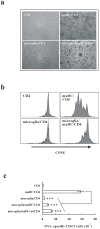

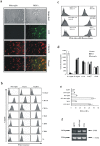
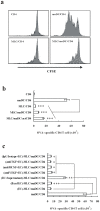
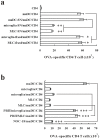
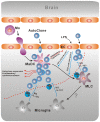
References
-
- Hanisch UK, Kettenmann H. Microglia: active sensor and versatile effector cells in the normal and pathologic brain. Nat Neurosci. 2007;10:1387–1394. - PubMed
-
- Tambuyzer BR, Ponsaerts P, Nouwen EJ. Microglia: gatekeepers of central nervous system immunology. J Leukoc Biol. 2009;85:352–370. - PubMed
-
- Ulvestad E, Williams K, Bjerkvig R, Tiekotter K, Antel J, et al. Human microglial cells have phenotypic and functional characteristics in common with both macrophages and dendritic antigen-presenting cells. J Leukoc Biol. 1994;56:732–740. - PubMed
-
- Bailey SL, Carpentier PA, McMahon EJ, Begolka WS, Miller SD. Innate and adaptive immune responses of the central nervous system. Crit Rev Immunol. 2006;26:149–188. - PubMed
Publication types
MeSH terms
Substances
LinkOut - more resources
Full Text Sources
Research Materials
Miscellaneous

